

As aspiring equestrians, we love to talk about collection. I talk about it quite a bit on this blog. But there seems to be one factor that most people overlook when considering collection; calmness. We talk about impulsion, rhythm, and relaxation, but you can’t achieve any of those without calmness. Relaxation is the key to rhythm which is the key to impulsion, but calmness is the key to relaxation and, therefore, the key to everything else as well.
What is the difference between calmness and relaxation?
You might be thinking, aren’t calmness and relaxation the same thing? For a long time, I would have had the same reaction. But, there is a key difference. What do you think of when you hear the word “relaxation?” You might be thinking of reclining in your favorite chair with a good book, maybe taking a nice nap. How do you tell if a horse is relaxed? Their back foot is probably cocked. They might lick and chew. They’ll probably yawn at some point. Now, think about what the answers to both of these questions have in common. These are all physical things that can be observed, actions, and reactions. Relaxation is a physical state of being.
What about calmness? How do you tell if someone is calm? The answer is that you can’t, really. It’s relatively easy to appear calm when you aren’t. Maybe you’re angry about something, but you smile anyway. You might be stressed, but you go through the motions of your day pretending that you aren’t. Someone who knows you really well might be able to tell, but you could probably fool most people if you wanted to. The same can be said for horses.
It’s pretty easy to tell when a horse isn’t relaxed. Their head will often be up. They’ll be stiff in the poll and won’t track up. The list goes on, but I think you get the point. But what about calmness? This is where so many people go wrong. The horse seems to be fine. The only problem is that he won’t fully relax. Maybe he’s just a little stiff in the poll or the ribcage. Those are two of the most common symptoms. When a horse gets stiff, the ingrained response for most of us is to address the stiffness. However, in many cases, stiffness isn’t the root of the problem. A stiff horse isn’t calm. If you try to fuss and obsess over flexing the horse to get them to loosen up, it’s very likely they will tense up more. Why? Because they sense your worry and frustration. They have no way of knowing why you are worried and frustrated. As your frustration builds, so does theirs. A frustrated horse is not calm. They might look calm at the time, but that is their training kicking in and preventing them from expressing their feelings. What looks like a calm horse on the outside can, in fact, be very frustrated and worried on the inside. That’s when things get dangerous.
How to Achieve Calmness in a Worried Horse
Achieving calmness in your horse requires you to achieve calmness in yourself first. First of all, slow down. I don’t just mean physically. Slow down mentally. Take a step back from the situation and breath. Ask yourself, “am I tense?” The answer will probably be yes. You may think you’re not, but there are many types of tension that we don’t think about. Mental tension is as much of a problem as physical tension. It could be anything from having a bad day at work to fighting with your significant other. Just like with horses, mental tension causes physical tension, even if we don’t realize it. Identifying sources of possible tension or concern is important so you can address them before you work with your horse. Obviously, you can’t always finish that work project before you ride or makeup with someone you argued with if they aren’t there. However, sometimes just identifying the problem is enough to allow you to compartmentalize and achieve the calmness your horse needs from you.
When I am tense or worried about things, I tend to rush through tacking up and not pay enough attention to my horse and how she is reacting to things. This never ends well and invariably ends up ruining the whole ride. Granted, it’s a bit worse for her because she is such a sensitive horse, but no matter how naturally calm your horse is, it’s vital for you to pay attention to their mental state at all times.
How To Assess Your Horse’s Mental State
Some horses are more transparent than others about their mental state. However, there are some basic cues that all horses use to express their mental state, which everyone who is around horses should be familiar with.
Licking and Chewing
To lick and chew, a horse must release his jaw, which requires a certain amount of relaxation. A tense horse will clamp their jaw shut. Therefore, licking and chewing mean that the jaw is relaxed. Relaxing the jaw is the first step in loosening the poll, so this behavior is a good sign.
Yawning
Yawning is good for the same reasons licking and chewing are. It signifies a release of the jaw. However, yawning is one step further than licking and chewing. When a horse licks and chews, their jaw still doesn’t open very wide. But, when they yawn, they have to open their mouth much wider, which requires an even greater degree of relaxation.
Cocking a Back Hoof
Horses are prey animals. Even now, so many generations removed from the wild, they retain a remarkable amount of their wild instincts. As prey animals, when it comes to a fight or flight situation, they will, if possible, pick flight. A few seconds can make the difference between life and death in the wild. This means that they must be prepared to flee at all times. When a horse cocks their back hoof to rest, they are surprisingly vulnerable. In order to flee, they have to put that hoof back on the ground. This provides two risks. First, if they put their foot down wrong, they might injure themselves, rendering them incapable of fleeing. Secondly, even if they do everything right, those few precious seconds it takes to get that hoof firmly planted back on the ground may still give the predator enough time to bring them down. Both scenarios are inevitably fatal unless the horse is very lucky. This knowledge is ingrained in them even if they have never been exposed to that sort of situation. Therefore, the only time a horse is going to put itself in such a vulnerable position is if they are truly calm, relaxed, and trusts that they are in no danger.
Ear Position
Ears are a very easy indicator of how calm a horse is. If the ears are slightly forward but not perked the whole way forward, they are calm and comfortable in their surroundings. See image A (below). This is a good example of a horse paying attention but being calm and unconcerned about anything happening around him. His ears are in a neutral position. Now compare that to image B (below). In image B, the horse’s ears are back in a position that indicates he’s had enough of what we are doing and is getting irritated. His ears aren’t fully pinned to the point that they are flattened and you can barely see them anymore, but he is clearly annoyed.


Wide Eyes
If you know what to look for, the eyes can tell you a lot about your horse’s mental state. The big red flag is when you can see the white of their eyes. They only really do that when they are truly terrified. The possible exception being horses with pink skin around their eyes. Sometimes they can look super wide-eyed when they are not. However, if you know your horse, you will still be able to tell the difference between what is their normal look and what is their oh-god-oh-god-I’m-gonna-die look.
Heavy Breathing
All horses breathe pretty heavily after enough exercise. It’s when they are breathing heavily and possibly sweating with little or no exercise that is a huge indication that something isn’t right. It might be physical, but it could also be mental turmoil. However, it’s important to rule out physical problems before blaming it all on their mental state.
Flared Nostrils
With heavy breathing comes flared nostrils. But, if a horse is extremely distressed, they might have widely flared nostrils even if they don’t appear to be breathing heavily. This is a big sign of tension.
Snorting
This can actually go either way. A horse that is putting their head down, yawning, or licking and chewing may add in a few snorts that signify a release of tension. However, if the snorting is combined with other symptoms such as a raised head, flared nostrils, heavy breathing, or abnormally wide eyes, this is often a sign of distress.
Head Position
A horse that is both calm and relaxed will often put their head down level with or below the withers. A horse that is calm but maybe not fully relaxed may have their head higher. However, a horse with an extremely high head is likely neither calm nor relaxed. This state of mind can be accompanied by any other symptoms we discussed.
Calm Human, Calm Horse
Knowing both your and your horse’s mental states is important to achieving calmness. If you are not calm and relaxed, you stand no chance of getting your horse calm and relaxed. Remember, horses feed off of us. If we are tense, they assume we know about some hidden danger that they don’t. Therefore, they remain alert and ready to flee from any perceived danger.
So, how do you ensure you are calm? Firstly, be smart about when you choose to work with your horse. If you really angry or upset about something, don’t go near your horse because they will catch on to your emotions and become upset as well. If you are only minorly upset or stressed, you can try breathing exercises, maybe a little yoga, or anything to help you become calm. I prefer a very simple Tai-chi routine, but you do what works for you. You need to be focused on the present and live in the moment. Horses don’t worry about what happened the day before or what will happen tomorrow. I say that with the caveat that horses remember things that happened to them in the past, which can affect them in the present. However, in my experience, the events of a horse’s past experiences primarily affect them in the present by modifying their instincts and behavior. If they were abused, they may associate things like a whip with being scary and dangerous. They aren’t necessarily thinking, “I’m scared of that because someone hurt me with it in the past.” That would be an association of the past that is more akin to what we humans might think. Instead, their thought process is along the lines of “I know that’s scary, and it will definitely hurt me.” In that way, they are still in the present. They aren’t worried about why they are convinced the whip is scary and will hurt them. Their instincts are just screaming, “whip is bad!”
Hot vs Cold
Another thing that can make calmness much harder to achieve is the dynamic between horse and rider. Some horses are hotter than others. What do I mean by hot? A hot horse is more sensitive, more reactive, and all around higher strung. A cold horse, on the other hand, is far less reactive and sensitive. Hot vs cold also applies to people in pretty much the same way. Why is this important? Putting a hot rider on a hot horse is generally a bad idea as they will feed off of each other making calmness and relaxation much more difficult the achieve. It’s not impossible, but it is much harder. A hot horse generally does better with a cooler, more mellow rider who can take the horse’s temperament in stride and not let the horse’s tension get to them. That being said, there is the other end of the spectrum where you pair a cool human with a cold horse. It might work if the horse is well-trained. The problem comes when the rider just doesn’t have the ability to bring their energy up high enough to motivate the horse. Some people are ok with that. Cold + cold is certainly better than hot + hot. However, ideally, we want one to be hotter and one to be colder. Why? Because we’re looking for that sweet spot in between where you’re not having to constantly nag the horse or hold him back. Both of those will cause stress and greatly hinder your ability to achieve calmness.
Now, don’t get me wrong, you don’t have to go out and buy a new horse just because you’re not quite the “ideal” temperament fit. When I got my mare Moose she was a hotter horse, and I was a hotter rider. She was not impressed and let me know it. I learned to bring my energy level down to where she needs it to be. We get along great now, but it took time and quite a bit of effort on my part. It’s all about finding the balance that works for you and your horse. Once you reach that equilibrium you and your horse will find true calmness much easier to achieve.
What does this all mean?
It really comes down to this; you need to know yourself and your horse, then find a balance between you. Be smart about when you work with your horse, especially when working with a more sensitive horse. Ensuring you are in the right frame of mind before entering the barn is vital. It will take time, but relaxation will soon follow once you achieve true calmness. You really can’t have one without the other. This makes calmness one of the fundamental building blocks of collection and all riding.
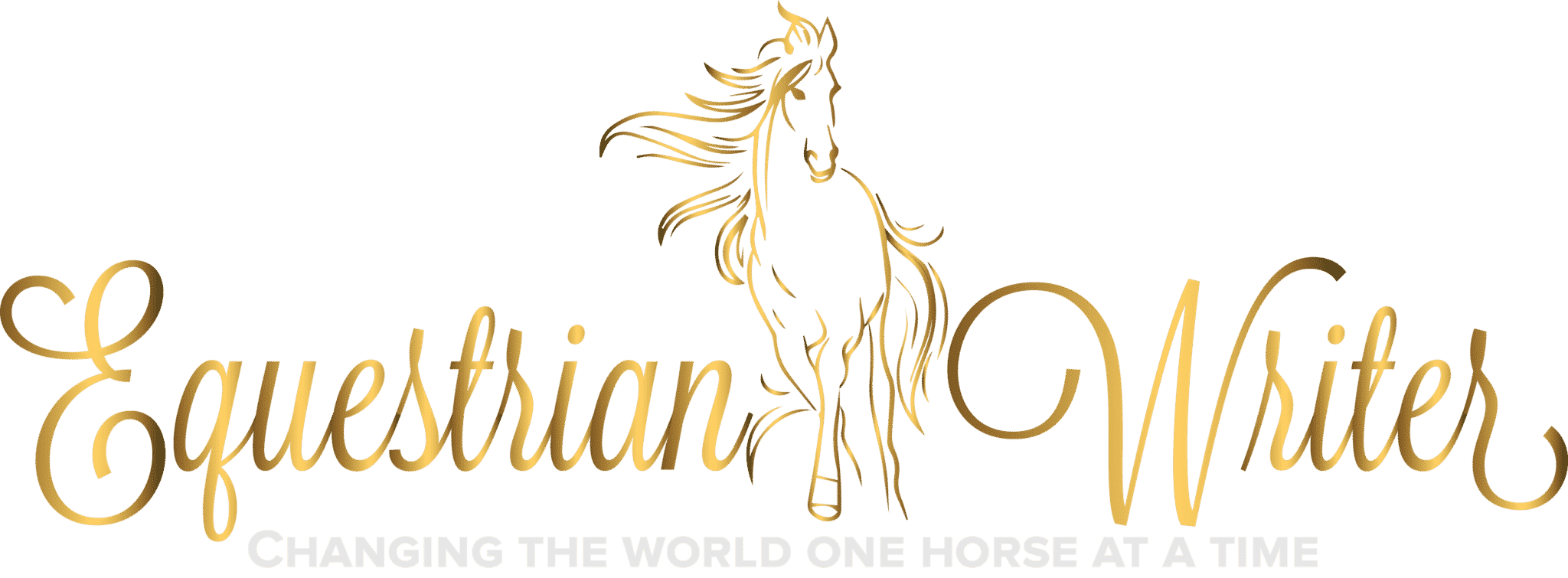





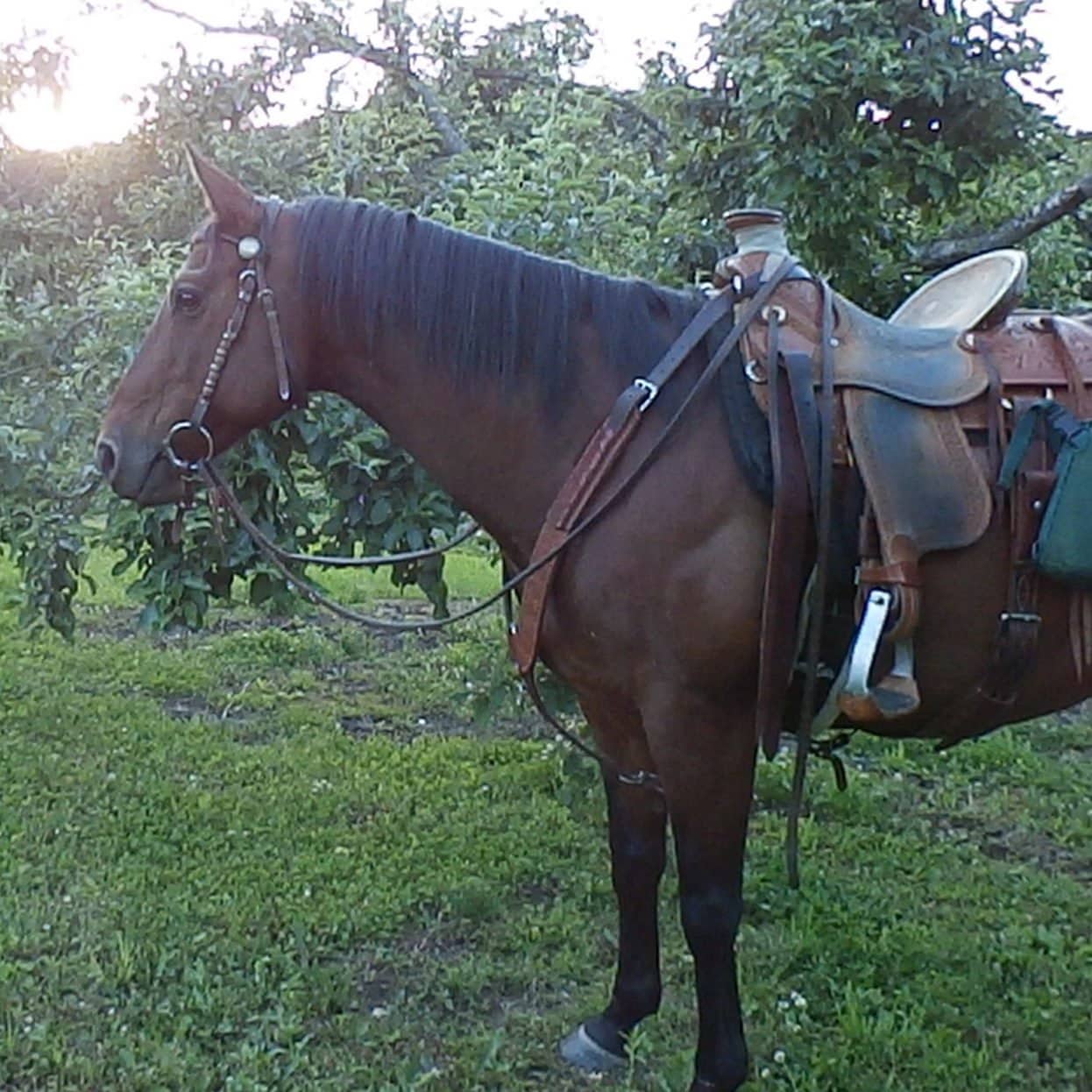
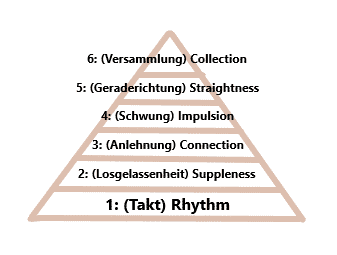
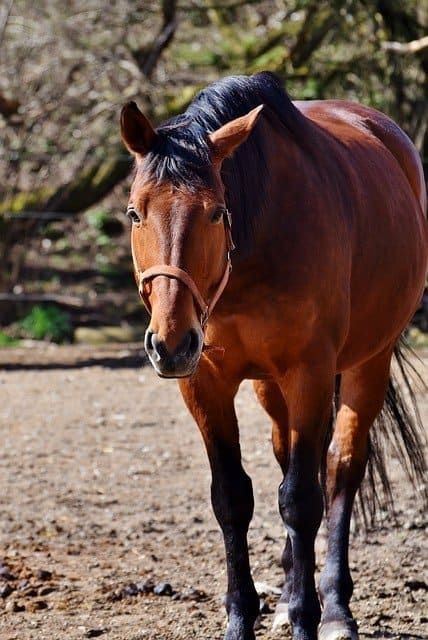
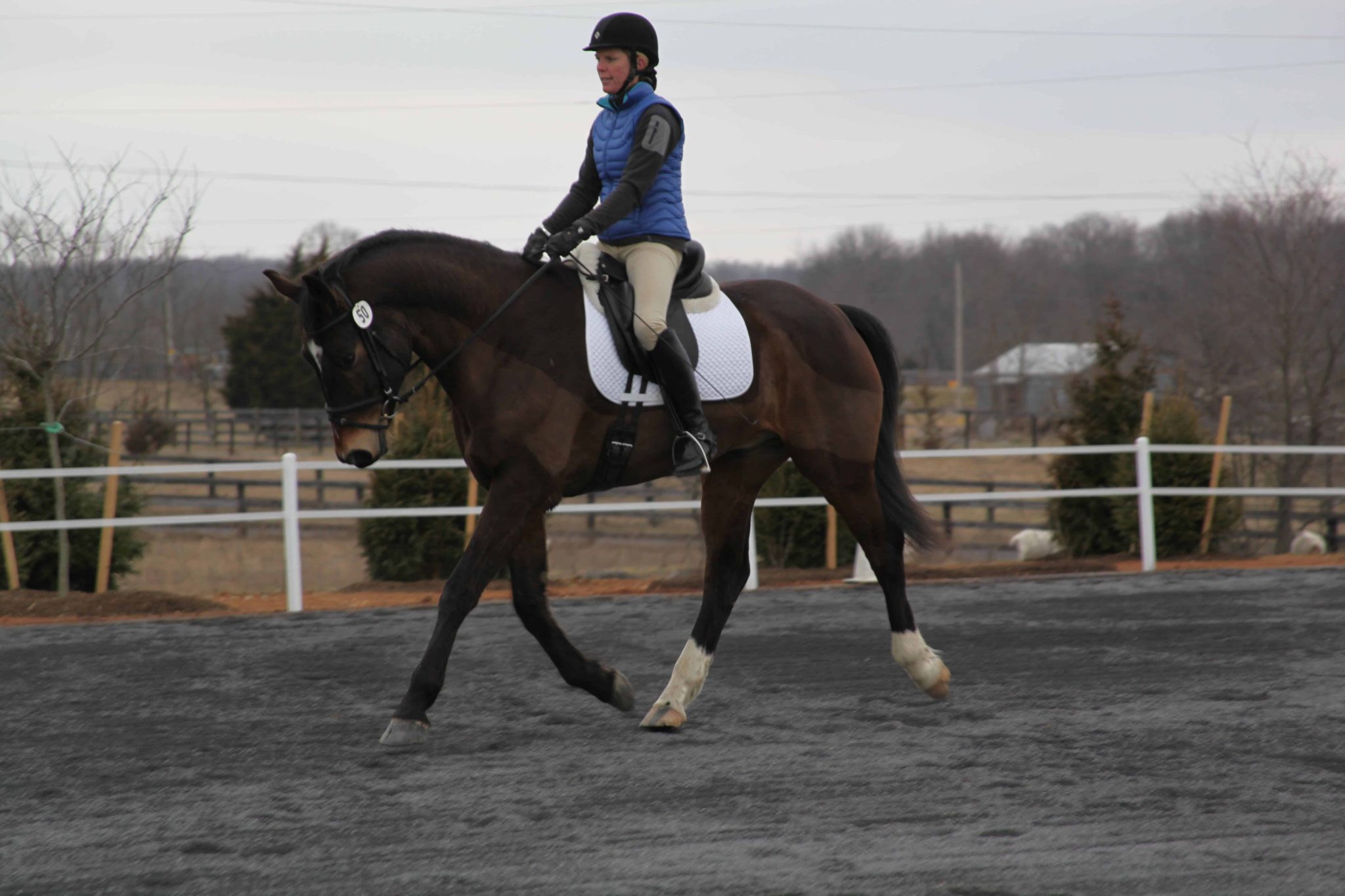
Good advice for those who are starting out in this world of horses… Thanks a lot for sharing!!
You’re welcome. I’m glad you found it useful. Thanks for reading!